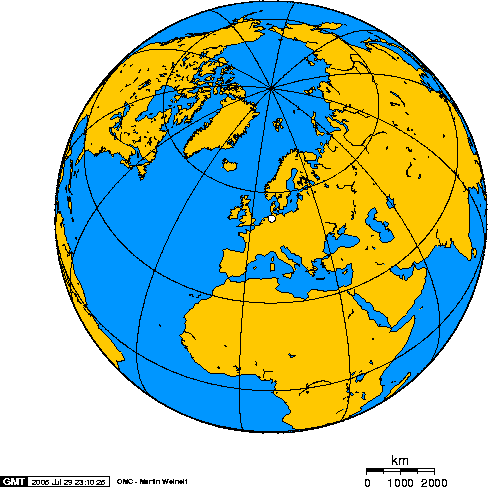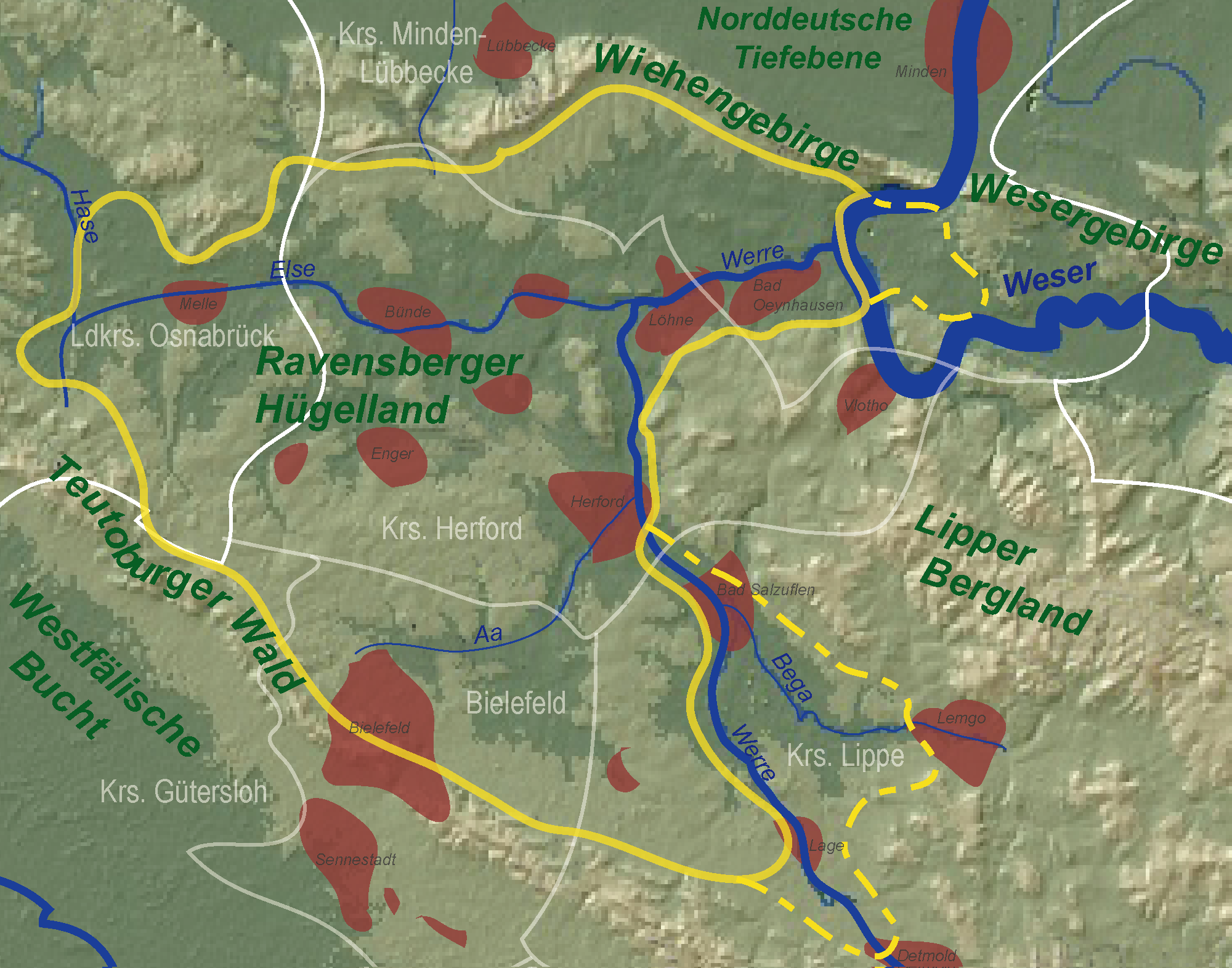|
Ahler Bruchgraben
The Ahler Bruchgraben (also: ''Ahler Bruchbach'') is a left tributary of the River Else in the northeast of the German federal states of North Rhine-Westphalia and Lower Saxony. The stream is part of the Weser basin and drains a small area of the Ravensberg Hills (''Ravensberger Hügelland''). See also *List of rivers of North Rhine-Westphalia *List of rivers of Lower Saxony All rivers in the German state of Lower Saxony flow directly or indirectly into the North Sea. A–Z A B D E F G H I J K L M N O P *Purrmühlenbach R S T *Tiefenbeek *Trillkebach *Trutenbeek *Twiste (Oste), Twiste U *Uffe ... References External linksRiver information system Rivers of North Rhine-Westphalia Rivers of Lower Saxony Rivers of Germany {{LowerSaxony-river-stub ... [...More Info...] [...Related Items...] OR: [Wikipedia] [Google] [Baidu] |
Germany
Germany, officially the Federal Republic of Germany, is a country in Central Europe. It lies between the Baltic Sea and the North Sea to the north and the Alps to the south. Its sixteen States of Germany, constituent states have a total population of over 84 million in an area of , making it the most populous member state of the European Union. It borders Denmark to the north, Poland and the Czech Republic to the east, Austria and Switzerland to the south, and France, Luxembourg, Belgium, and the Netherlands to the west. The Capital of Germany, nation's capital and List of cities in Germany by population, most populous city is Berlin and its main financial centre is Frankfurt; the largest urban area is the Ruhr. Settlement in the territory of modern Germany began in the Lower Paleolithic, with various tribes inhabiting it from the Neolithic onward, chiefly the Celts. Various Germanic peoples, Germanic tribes have inhabited the northern parts of modern Germany since classical ... [...More Info...] [...Related Items...] OR: [Wikipedia] [Google] [Baidu] |
North Rhine-Westphalia
North Rhine-Westphalia or North-Rhine/Westphalia, commonly shortened to NRW, is a States of Germany, state () in Old states of Germany, Western Germany. With more than 18 million inhabitants, it is the List of German states by population, most populous state in Germany. Apart from the city-states (Berlin, Hamburg and Bremen), it is also the List of German states by population density, most densely populated state in Germany. Covering an area of , it is the List of German states by area, fourth-largest German state by size. North Rhine-Westphalia features 30 of the 81 German municipalities with over 100,000 inhabitants, including Cologne (over 1 million), the state capital Düsseldorf (630,000), Dortmund and Essen (about 590,000 inhabitants each) and other cities predominantly located in the Rhine-Ruhr metropolitan area, the largest urban area in Germany and the fourth-largest on the European continent. The location of the Rhine-Ruhr at the heart of the European Blue Banana make ... [...More Info...] [...Related Items...] OR: [Wikipedia] [Google] [Baidu] |
Lower Saxony
Lower Saxony is a States of Germany, German state (') in Northern Germany, northwestern Germany. It is the second-largest state by land area, with , and fourth-largest in population (8 million in 2021) among the 16 ' of the Germany, Federal Republic of Germany. In rural areas, Northern Low Saxon and Saterland Frisian language, Saterland Frisian are still spoken, though by declining numbers of people. Lower Saxony borders on (from north and clockwise) the North Sea, the states of Schleswig-Holstein, Hamburg, , Brandenburg, Saxony-Anhalt, Thuringia, Hesse and North Rhine-Westphalia, and the Netherlands. Furthermore, the Bremen (state), state of Bremen forms two enclaves within Lower Saxony, one being the city of Bremen, the other its seaport, Bremerhaven (which is a semi-exclave, as it has a coastline). Lower Saxony thus borders more neighbours than any other single '. The state's largest cities are the state capital Hanover, Braunschweig (Brunswick), Oldenburg (city), Oldenburg, ... [...More Info...] [...Related Items...] OR: [Wikipedia] [Google] [Baidu] |
Ahle (Schwülme)
Ahle is a , orographically left-hand, tributary of the Schwülme river of Lower Saxony, Germany. It flows into the Schwülme south of Uslar. See also * List of rivers of Lower Saxony All rivers in the German state of Lower Saxony flow directly or indirectly into the North Sea. A–Z A B D E F G H I J K L M N O P *Purrmühlenbach R S T *Tiefenbeek *Trillkebach *Trutenbeek *Twiste (Oste), Twiste U *Uffe ... References Rivers of Lower Saxony Solling Rivers of Germany {{LowerSaxony-river-stub ... [...More Info...] [...Related Items...] OR: [Wikipedia] [Google] [Baidu] |
Else (Werre)
The Else () is a left tributary of the river Werre in the northeast of North Rhine-Westphalia and in southern Lower Saxony. The Else is a distributary of the river Hase and begins at a river bifurcation near Melle. Origin The River Else does not have a source but originates at a hydrological phenomenon known as a river bifurcation. The bifurcation is near Gesmold (part of the borough of Melle) in Lower Saxony, where the river Else branches off the river Hase (at Hase river kilometre 158.9). The bifurcation may have been created or established artificially; or at least maintained artificially. This is however unclear. In history there were disputes over the distribution of water that was able to be controlled by man-made means. For example, the entire water flow could be diverted either into the River Hase or River Werre during conflicts. Today the Hase loses a third of its water mass at the bifurcation. The Hase flows northwest to the Ems, while the Else flows east to the ... [...More Info...] [...Related Items...] OR: [Wikipedia] [Google] [Baidu] |
Bünde
Bünde (; ) is a town in the Herford district, in North Rhine-Westphalia, Germany. Geography Bünde is situated between Osnabrück (west), Hannover (east) and Bielefeld (south). Waterways The town is crossed from west to east by the River Else, one of the few rivers in the world that does not originate from a spring, but as a result of bifurcation. It drains the whole area and discharges via the Werre and Weser into the North Sea. Within the town area it is joined by numerous small streams from the south and north. One of the northern streams is the Gewinghauser Bach, which on its way to the Else crosses water meadows in the district of Ennigloh-Gewinghausen. Other tributaries coming from the north in downstream order are the Ahler Bruchbach, which starts in Rödinghausen, flows mainly through the district of Ahler Bruch and enters the Else in the Melle area; in addition there is the Darmühlenbach, which also rises in Rödinghausen; then the Spradower Mühlenbach and final ... [...More Info...] [...Related Items...] OR: [Wikipedia] [Google] [Baidu] |
Melle, Germany
Melle () is a city in the Osnabrück (district), district of Osnabrück, Lower Saxony, Germany. The city corresponds to what used to be the district of Melle until regional territorial reform in 1972. Since then, Melle is the third largest city in Lower Saxony in terms of surface area. History Melle was first mentioned in a document from 1169. In 1443 Heinrich von Moers, Bishop of Osnabrück, gave Melle the privilege of a ''Wigbold''. Osnabrück looked after Melle's interests in the Westphalian Hanseatic League. Melle belonged to the Kingdom of Hanover until 1866 when it became part of Prussia. In 1885 Amt Grönenberg and the municipality Melle formed the prussian district Kreis Melle. The district Melle later on became the municipality Melle. In 1972 the former district with its 56 municipalities were united to the city Melle which since then is part of Osnabrück (district). Geography Geographical position Melle is situated in a valley penned between the Wiehen Hills in the Nor ... [...More Info...] [...Related Items...] OR: [Wikipedia] [Google] [Baidu] |
Rödinghausen
Rödinghausen (; ) is a municipality in the Herford (district), district of Herford, in North Rhine-Westphalia, Germany. Geography Rödinghausen is situated on the southern slope of the Wiehengebirge, approx. 20 km north-west of Herford and 25 km north of Bielefeld. Neighbouring municipalities * Bünde * Melle, Germany, Melle * Preußisch Oldendorf * Hüllhorst Division of the municipality Rödinghausen consists of 5 villages: * Bieren (1,299 inhabitants) * Bruchmühlen (3,378 inhabitants); (named ''Westkilver'' until 1969) * Ostkilver (1,876 inhabitants) * Rödinghausen (1,644 inhabitants) * Schwenningdorf (2,356 inhabitants) Mayors * since 2020: Siegfried Lux (SPD) * 2004–2020: Ernst-Wilhelm Vortmeyer (* 1954) (SPD) * 1999-2004: Kurt Vogt (SPD) * 1969-1998: Günter Oberpenning (SPD) References External links Official site Wiehen Hills Herford (district) {{Herford-geo-stub ... [...More Info...] [...Related Items...] OR: [Wikipedia] [Google] [Baidu] |
Tributary
A tributary, or an ''affluent'', is a stream or river that flows into a larger stream (''main stem'' or ''"parent"''), river, or a lake. A tributary does not flow directly into a sea or ocean. Tributaries, and the main stem river into which they flow, drain the surrounding drainage basin of its surface water and groundwater, leading the water out into an ocean, another river, or into an endorheic basin. The Irtysh is a chief tributary of the Ob (river), Ob river and is also the longest tributary river in the world with a length of . The Madeira River is the largest tributary river by volume in the world with an average discharge of . A confluence, where two or more bodies of water meet, usually refers to the joining of tributaries. The opposite to a tributary is a distributary, a river or stream that branches off from and flows away from the main stream. [...More Info...] [...Related Items...] OR: [Wikipedia] [Google] [Baidu] |
Weser
The Weser () is a river of Lower Saxony in north-west Germany. It begins at Hannoversch Münden through the confluence of the Werra and Fulda. It passes through the Hanseatic city of Bremen. Its mouth is further north against the ports of Bremerhaven and Nordenham. The latter is on the Butjadingen Peninsula. It then merges into the North Sea The North Sea lies between Great Britain, Denmark, Norway, Germany, the Netherlands, Belgium, and France. A sea on the European continental shelf, it connects to the Atlantic Ocean through the English Channel in the south and the Norwegian Se ... via two highly Saline water, saline, Estuary, estuarine mouths. It connects to the canal network running east–west across the North German Plain. The river, when combined with the Werra (a dialectal form of ''Weser''), is long and thus, the longest river entirely situated within Germany (the Main (river), Main, however, is the longest if the Weser-Werra are considered separate). ... [...More Info...] [...Related Items...] OR: [Wikipedia] [Google] [Baidu] |
Ravensberg Hills
The Ravensberg Basin () or Ravensberg Hills () is a natural region in the Regierungsbezirk Detmold, governorate of Detmold () in the northeastern part of the German state of North Rhine-Westphalia; small elements also fall within the neighbouring state of Lower Saxony. It is part of the lower Weser Uplands and includes the hilly basin country between the Wiehen Hills in the north, Lippe Uplands in the east, Teutoburg Forest in the south and Osnabrück Hills in the west. The heart of the Ravensberg Basin is almost coincident with the cultural region of the Ravensberg Land. See also * County of Ravensberg * Ravensberg Land * Ravensberg Castle * Minden-Ravensberg (old administrative unit) Sources * Adolf Schüttler: ''Das Ravensberger Land''. Aschendorff, Münster 1986. * Emil Meynen (Hrsg.): ''Handbuch der naturräumlichen Gliederung Deutschlands.'' Selbstverlag der Bundesanstalt für Landeskunde, Remagen 1959-1962 (Teil 2, enthält Lieferung 6-9), ISBN B0000BJ19F Externa ... [...More Info...] [...Related Items...] OR: [Wikipedia] [Google] [Baidu] |


